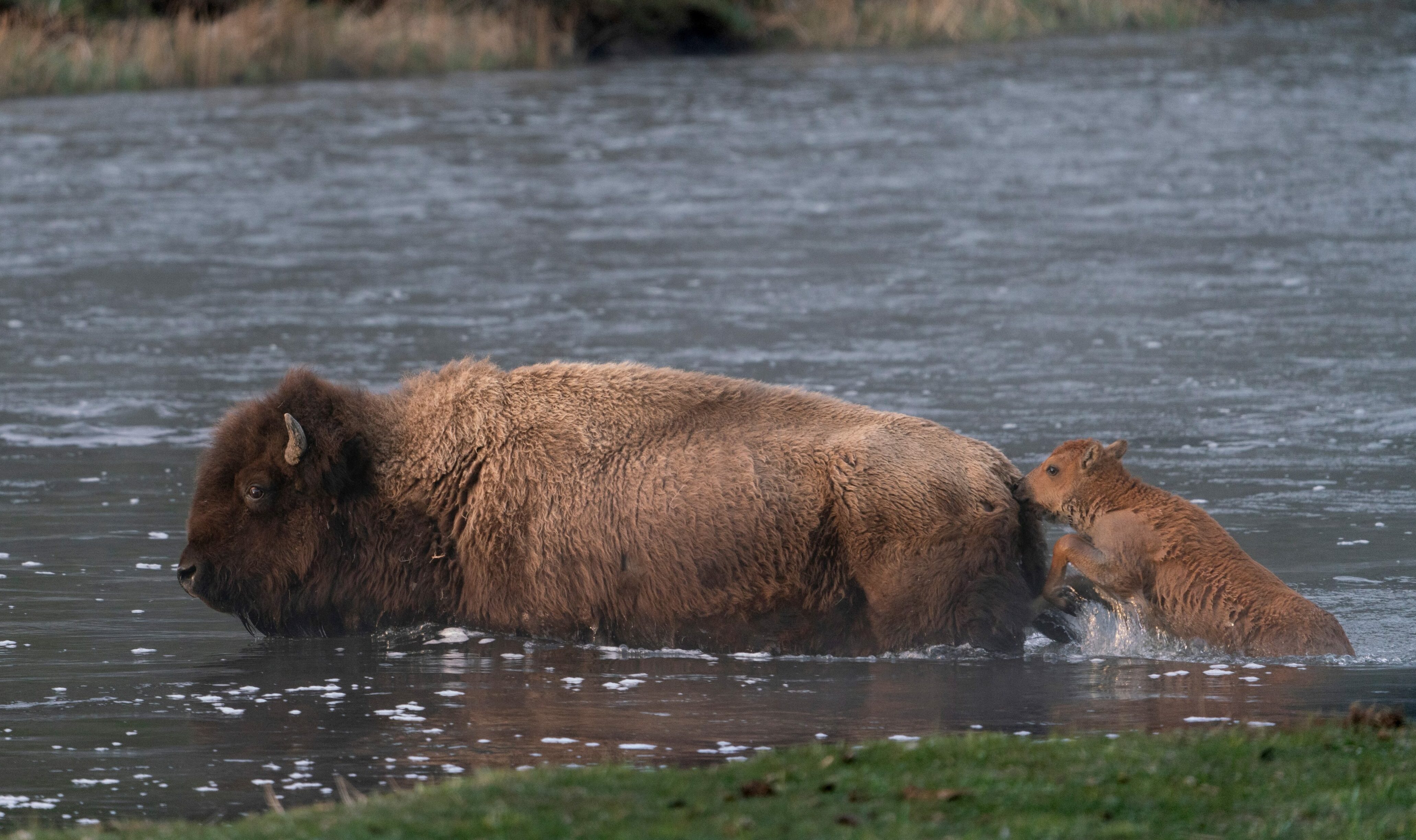News & Updates
The Burning Question: Is Our Savior Complex Killing Wildlife?


In May, a visitor to Yellowstone National Park stopped and observed a bison calf struggling to cross the Lamar River. The calf had been separated from the herd as it attempted to cross the busy body of water. The visitor, in an apparent rescue attempt, approached the calf and pushed it onto the bank of the river and into the roadway.
While his intentions might have been good, the human handling of the newborn calf caused the herd to reject the baby bison. Park rangers made several attempts to reconcile the calf with the herd with no success. Unfortunately, the calf continued to approach people and motorists after the incident posing a threat to guests and causing National Park Service staff to be forced to put the baby bison down.
The park rangers decision to euthanize the bison instead of sending it to a sanctuary was due to state and federal regulations prohibiting transferring bison out of Yellowstone except for scientific research or meat processing. The visitor in question was sentenced to a $500 fine and a $500 payment to Yellowstone’s wildlife protection fund for his involvement in the calf’s demise.
This incident isn’t the first time a baby bison has died due to tourist’s interference. In 2016 a father and son traveling from Canada to Yellowstone noticed a bison calf shivering and decided to load it into the back of their car. The calf was subsequently rejected by its herd after human involvement and Yellowstone staff were forced to euthanize the baby bison.
Countless incidents follow this storyline of well-intentioned people meaning to rescue wildlife and incidentally causing more harm than good. In fact, it isn’t just bison calves harmed, in 2010 a seal pup was “rescued” by a couple in Westport after being found alone on the beach. What the couple didn’t know was that harbor seals often leave their pups on land while out searching for food and most likely the seal pup would have been fine if they had left it alone. Instead, the baby seal went through months of rehabilitation at the hands of PAWS before eventually returning to the ocean.
These ongoing incidents of human interference in wild domains begs the question, is our savior complex killing wildlife? It’s fair to assume that most of these rescues were done by well-intentioned albeit misinformed individuals. While seemingly harsh it’s important to remember that these animals are wild and hence part of the larger circle of life.
Yellowstone estimates on average 25% of the bison calves born each season will perish, there’s no need for human interference to increase those numbers. In fact, these incidents serve as a good reminder to leave wildlife alone. Yellowstone guidelines state all visitors should stay 25 yards away from bison while visiting and 100 yards away from bears and wolves for the safety of both humans and the wildlife in question.
If you’re curious about how to measure that distance, the Leave No Trace thumb trick is a great point of reference.
So when should you give a helping hand to wildlife? There are a few circumstances where it’s alright to get involved in any animal rescue. The Humane Society has put together a list for anyone who’s curious about when it’s time to be a savior or not including:
- The animal is brought to you by a cat or dog.
- A bird is featherless or nearly featherless and on the ground.
- The animal is shivering.
- There’s a dead parent nearby.
- The animal is crying and wandering all day long.
- The animal shows signs of injury:
- They have an obvious broken limb.
- There’s evidence of bleeding.
- You can see an obvious asymmetry: Do both eyes look clear? Do both wings or pairs of legs look similar
Even in these cases the best case scenario is not to get directly involved but to call a local wildlife center or wildlife rehabilitator for further guidance and advice. Whether well intentioned or not, wildlife is wild for a reason and human involvement usually serves more harm than good. You can learn more about how to support healthy interactions with wildlife the Leave No Trace way here.
Let’s protect and enjoy our natural world together
Get the latest in Leave No Trace eNews in your inbox so you can stay informed and involved.
